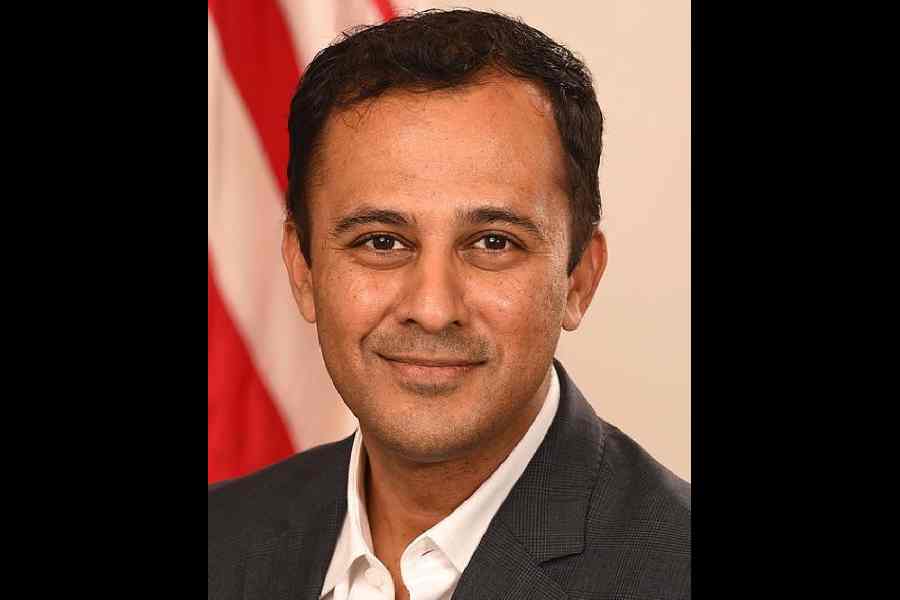Bacteria that have developed resistance to antibiotics account for nearly five million deaths or nearly two of every three deaths from bacterial infections worldwide, the first comprehensive assessment of the global burden of antimicrobial resistance (AMR) has found.
Health researchers who released the assessment’s findings on Thursday have warned that if the world does not prioritise action on AMR now, the toll will increase with young infants, the elderly, people with chronic illnesses, and those heading into surgery facing the highest risk. Their findings were published in The Lancet, an international medical journal.
Ramanan Laxminarayan, president of the One Health Trust — a research think tank — and research scholar at Princeton University, has been tracking AMR trends for nearly two decades. Ramanan, a member of the global burden assessment team, spoke to The Telegraph about the new findings, the challenges in efforts to combat AMR, and the significance of a planned high-level United Nations meeting on AMR this September.
Q: How is this new assessment different from earlier studies on AMR?
Ramanan: We performed a novel analysis of how big the burden of AMR is for children under age five and adults over age 65. We find that progress towards global sustainable development goal targets regarding childhood survival is seriously threatened by AMR. We also performed a novel modelling analysis on the avertible burden of AMR-linked deaths in low- and middle-income countries. We have found that over 7,50,000 deaths per year could be prevented in low- and middle-income countries through improved infection prevention, universal access to basic water, sanitation, and hygiene services and universal coverage of the most critical childhood vaccines.
Q: Health authorities everywhere, including India, have acknowledged the threat posed by AMR. India, among other countries, had also some years ago devised an action plan to combat AMR. What are the barriers to achieving progress against AMR?
Ramanan: National action plans are an important first step in efforts to tackle AMR, but many of them are not properly funded, and the political will to implement them falters as a result. We need to understand that the initiatives required to fight AMR, which include improvements in infection prevention measures, better access to water and sanitation infrastructure, and vaccination efforts should be part of a broader national and international development agenda and do not rely solely on the efforts of AMR national action plans.
Q: Could you outline some of the new findings that highlight the threats posed by AMR?
Ramanan: Antibiotics that do not work because of resistance threaten the treatment of common infections in all people and complicate the treatment of diseases where antibiotics are critical such as in cancer treatment. Each year, an estimated 7.7 million deaths are caused by bacterial infections of which 4.95 million deaths per year are associated with AMR, or bacteria resistant to antibiotics. The evidence we have indicates that six bacteria account for 73 per cent of deaths attributable to bacterial AMR and seven bacteria-drug combinations each caused more than 50,000 deaths. The findings highlight the importance of developing policies that specifically target the deadliest of these bacteria-drug combinations. This needs to be done through expansion of infection prevention and infection control initiatives, improving access to second-line antibiotics when needed, and development of new antibiotics and vaccines.
Q: What are the prospects for new antibiotics to address the shrinking arsenal of existing antibiotics?
Ramanan: New antibiotics are not being developed fast enough to emerge as possible solutions to AMR. Drug research and development is expensive, and many pharmaceutical companies are unwilling to invest the money. Those that do are then forced to price the antibiotics really high in order to make back their investment — the prices are simply unaffordable to patients. Given issues relating to price, licensure, and inaccessibility, new antibiotics cannot be the only solution to this problem, even if they emerge more quickly. Improvements in diagnostic technologies and vaccines, for example, could also help.
Q: What is the significance of the UN high-level meeting on AMR in September?
Ramanan: The UN high-level meeting this September will be the culmination of many years of work by countries to address this issue. The first-ever high-level meeting on AMR was held in 2016. However, because it was the first, the political declaration which was passed in that meeting was not ambitious enough and was missing key components that would have made it more actionable: political will, targets, funding and an accountability framework. This time, with more political support, we hope to see specific, actionable items in the declaration surrounding targets, funding, and building an accountability mechanism to ensure progress over the long term. Our suggested targets are a 10 per cent reduction in AMR deaths, a 20 per cent reduction in inappropriate antibiotic use in humans, and a 30 per cent reduction in inappropriate antibiotic use in animals. Other global pacts such as the Montreal Protocol on ozone have succeeded in galvanising the global community towards a common cause. We hope the declaration in September will be similarly successful.










